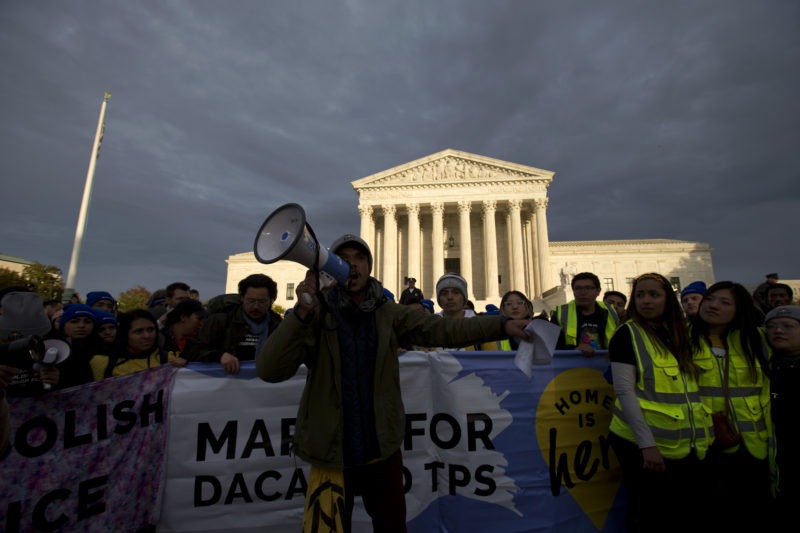US Supreme Court to examine ‘Dreamers’ program that Trump wants axed
Defenders of people known as “Dreamers” — who were brought to the US illegally as children — rally outside the Supreme Court on November 10, 2019 (Jose Luis Magana)
Washington (AFP) – Angelica Villalobos came to the United States illegally as a child and lived in the shadows until she and 700,000 others like her gained protection from deportation under a program that the Supreme Court will take up on Tuesday.
The court will hear arguments on the fate of these people known as “Dreamers,” whom the administration of then president Barack Obama “gave wings,” in Villalobos’ words, in 2012 by letting them have work and study permits.
President Donald Trump — who campaigned on a starkly anti-immigrant platform — moved in 2017 to end the Delayed Action for Childhood Arrivals (DACA) program that has given Villalobos and others legal cover in the US.
Trump gave Congress six months to devise a plan to replace DACA, saying he was sympathetic to the “Dreamers” but that Obama had established the program illegally.
But lawmakers were unable to reach agreement, and the program expired the following year.
The phase-out of the program has been appealed to several courts across the country, ultimately reaching the Supreme Court.
It is not expected to issue a ruling before next year, when the US will hold a hotly contested presidential election.
If the Supreme Court fails to extend legal protection to the “Dreamers,” they are not expected to be automatically deported; most will probably slip quietly into the shadowy life of the undocumented, for whom working and studying is fraught with difficulty.
In the meantime “this is has been like a roller coaster,” said Villalobos, a 34 Mexican and mother of five who works in an auto repair shop in Oklahoma.
She said she and her husband, who also entered illegally as a minor, talk to their children about what might happen if the court ruling does not go their way and they maybe cannot drive or work anymore — “things that we’re doing right now that keep the family more normal.”
– ‘Bargaining chips’ –
Like them, nearly 700,000 others “have been in the country for at least 12 years, become part of the fabric of our communities or institutions,” said Omar Jadwat of the American Civil Liberties Union.
He said the Trump administration moved to end DACA in order to use “Dreamers” as “bargaining chips” with the Democrats to achieve other immigration goals.
Indeed, Trump tried in vain to obtain congressional funding for his promised wall along the border with Mexico in exchange for new protections for the “Dreamers,” many of whom have little to no memory of the country in which they were born.
The vast majority are from Mexico, and smaller numbers come from El Salvador, Guatemala, Honduras, Peru, South Korea, Brazil and other countries.
The courts have stepped into this case because of questions about the Trump administration’s motives for ending DACA.
They have said so far that it acted “arbitrarily or capriciously.”
Noel Francisco, the solicitor general who will represent the government before the Supreme Court, said in September that what it has done with DACA is “entirely lawful and rational.”
Besides the fate of the immigrants, the case is important because of what it means for executive authority, said Steven Schwinn, a professor of law at the University of Chicago.
He said the court could in effect extend the discretionary powers of the president by allowing him to do or undo policy without giving an explanation.
Disclaimer: Validity of the above story is for 7 Days from original date of publishing. Source: AFP.


